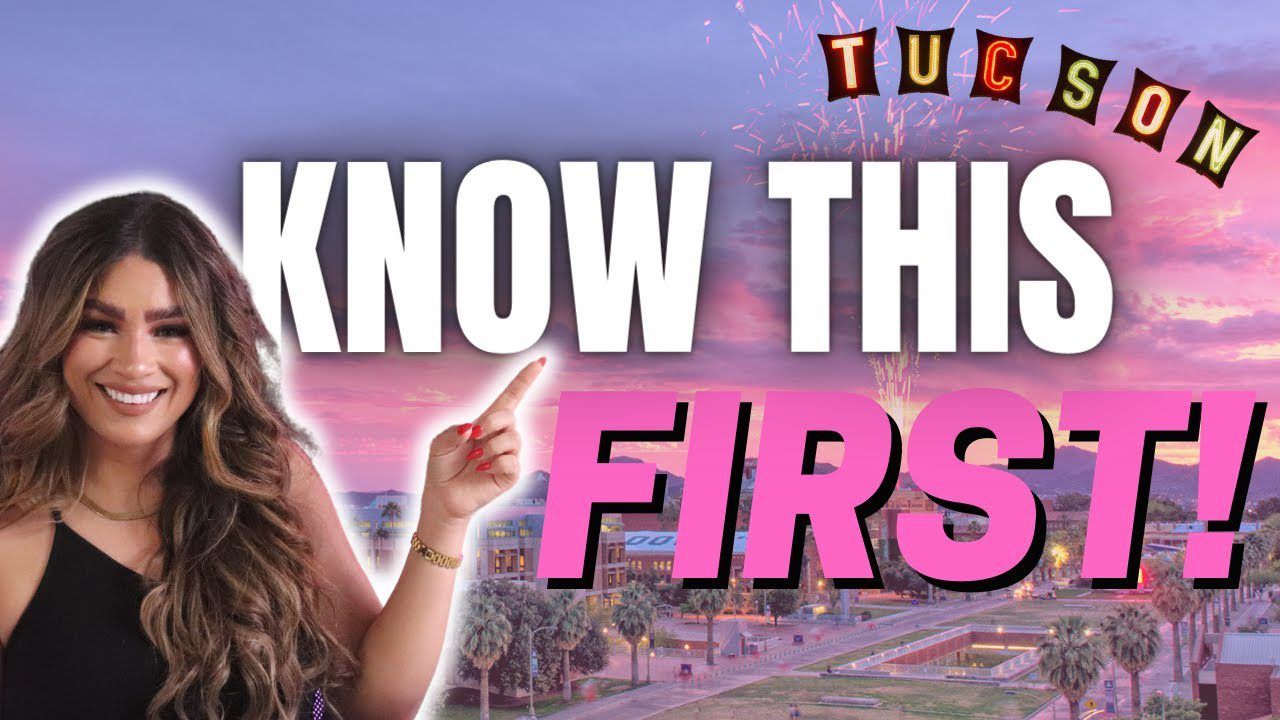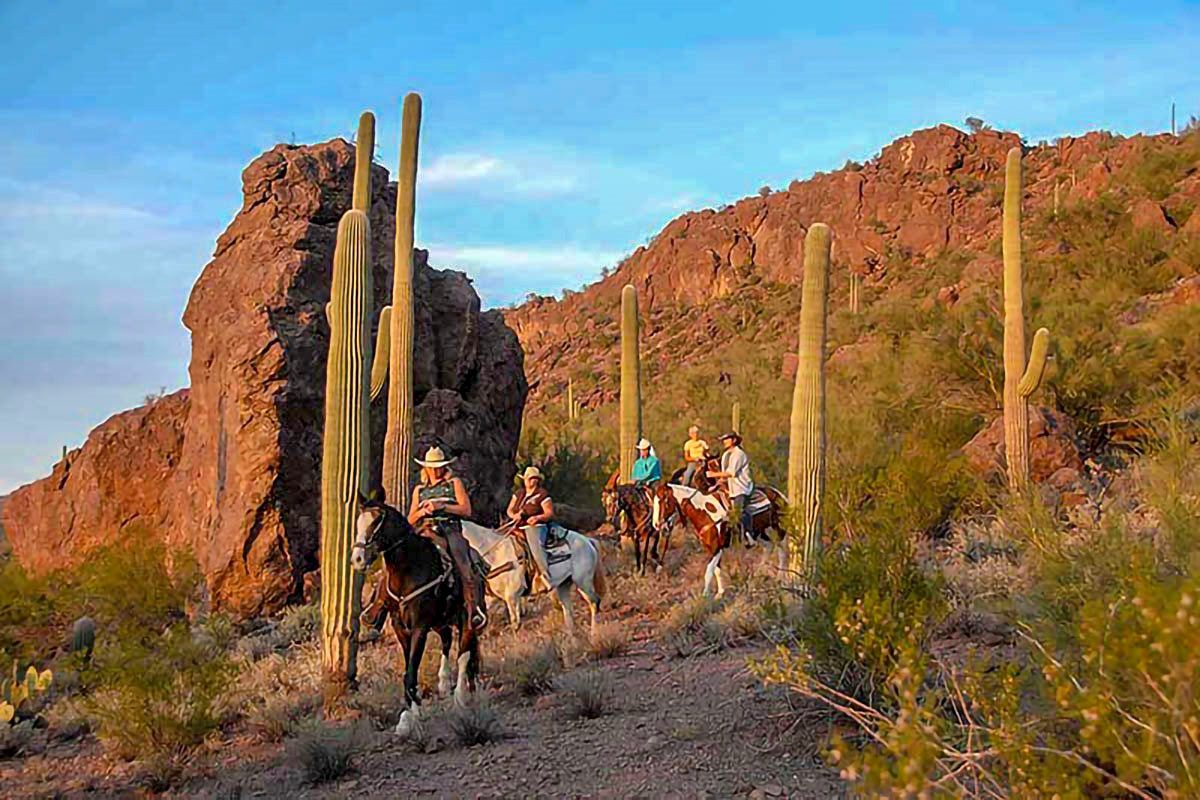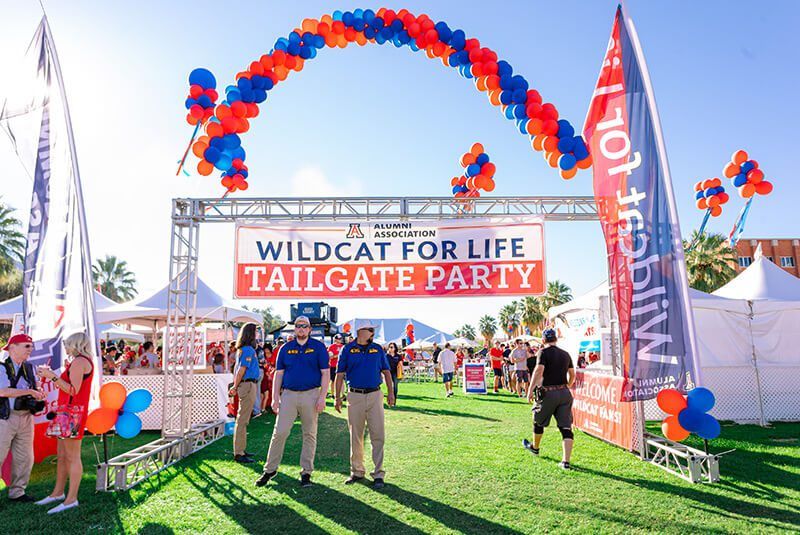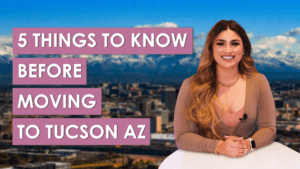15 Things You MUST Know When Living in Tucson Arizona


Share This Article With Your Friends
If you’re going to be making the move to Tucson, Arizona, there’s a few things you’re going to want to know before moving here.
In this blog, we'll go over 15 things you must know about when living in Tucson, AZ. If you are planning to relocate to Tucson, this will be a great resource! Let’s get started.
1. Hot Climate
Tucson is known for its intense heat, especially during the summer months. Summers here are no joke, with temperatures soaring well above 100-degree. Despite the extreme temperatures, life goes on in Tucson. The city is well-equipped to deal with the heat, and you'll find residents and tourists alike finding ways to beat it. Whether it's taking a dip in a refreshing pool, seeking shade under a majestic saguaro cactus, or enjoying indoor activities, Tucsonans know how to stay cool.
During the summer, high temperatures in Tucson can reach well into the triple digits—sometimes even exceeding 110 degrees Fahrenheit! That's why it's crucial to stay hydrated, wear lightweight clothing, and always carry water with you. The dry heat can be deceiving, so it's important to take care of yourself and others during the hottest days.
2. Monsoon Seasons
It's not all scorching heat during the summer. The summer months also bring a unique weather phenomenon known as the monsoon season. Starting around July, the monsoons bring relief in the form of dramatic thunderstorms and heavy rainfall. These brief but powerful storms cool down the city, rejuvenate the desert landscape, and provide a much-needed break from the intense heat.
While Tucson's summer rains can provide relief from the heat and help to alleviate drought conditions, they can also bring localized heavy rainfall and the potential for flash flooding. The intensity and distribution of rainfall during this time can vary greatly from year to year, making it challenging to predict exact amounts or timing.
3. Sun Protection
Sun protection is crucial in Tucson, AZ, due to its location in the Sonoran Desert and its high average number of sunny days. The intense desert sun in Tucson can be harmful to your skin and increase the risk of sunburns, premature aging, and skin cancer.
Here are some important tips for sun protection in Tucson. Apply a broad-spectrum sunscreen with a (SPF) of 30 or higher to all exposed skin. Use a generous amount and reapply every two hours or more frequently if you are sweating or swimming.
Tucson's elevation is approximately 2,400 feet, which can result in increased UV radiation. The higher you are, the stronger the sun's rays. Adjust your sun protection measures accordingly.


Moving to Tucson?
Our team talks to so many people thinking about moving to Tucson just like you and we absolutely love it! Click the button below or shoot us a text or call: (520) 335-0350
4. Water Conservation
Water conservation is a crucial practice in Tucson, due to the region's arid climate and limited water resources. Tucson has implemented various strategies and programs to promote responsible water usage and conservation.
One of the first steps towards water conservation is adopting water-efficient fixtures and appliances. By installing low-flow toilets, showerheads, and faucets, we can significantly reduce water consumption without sacrificing comfort or functionality.
Tucson residents also embrace rainwater harvesting. Capturing rainwater during the infrequent but valuable precipitation events allows us to reuse it for non-potable purposes like landscape irrigation. Rain barrels, cisterns, and other storage methods make every drop count.
Water conservation is vital for Tucson's sustainability. By embracing practices like xeriscaping, rainwater harvesting, and efficient fixtures, we can preserve our precious water resources, especially during the dry summer months. It's all about using water wisely and understanding the impact our actions have on the environment.
5. Hiking and Outdoor Activities
Tucson is a haven for outdoor enthusiasts, offering a wide range of hiking and outdoor activities. With its stunning desert landscapes, rugged mountain ranges, and mild winter climate, Tucson provides ample opportunities for adventure and exploration. Here are some notable outdoor activities you can enjoy in Tucson.
Hiking: Tucson boasts numerous hiking trails that cater to different skill levels and preferences. Whether you're a beginner or an experienced hiker, you can find trails suited to your abilities. Some popular hiking spots include Sabino Canyon, Catalina State Park, Saguaro National Park, and Mount Lemmon.
Biking: Tucson is a bike-friendly city, with plenty of paths and trails for cyclists of all levels. The Loop, a 131-mile shared-use path, encircles Tucson and provides a safe and scenic route for biking, walking, and running. Additionally, Mount Lemmon offers exhilarating mountain biking trails, while the Fantasy Island Trails are ideal for off-road biking enthusiasts.
Rock Climbing: Tucson's surrounding mountain ranges, such as the Santa Catalina Mountains and the Rincon Mountains, offer excellent opportunities for rock climbing. These locations feature a variety of climbing routes, from beginner-friendly to challenging, with stunning desert vistas as a backdrop.
Horseback Riding: Experience the beauty of Tucson's landscapes on horseback. Several stables and ranches in and around Tucson offer guided horseback riding excursions, allowing you to immerse yourself in the desert scenery while enjoying a leisurely ride. These are just naming a few of the great outdoor activities!


6. Saguaro Cacti
With its majestic stature and distinctive arms, is an emblem of the American Southwest. But why do the people of Tucson hold such a deep love for these prickly wonders? Well, it goes beyond just their aesthetic appeal.
The saguaro cactus is an integral part of Tucson's cultural identity. Tucson sits at the heart of the Sonoran Desert, where the saguaro has been revered by indigenous peoples, such as the Tohono O'odham Nation, for generations. These cacti are considered sacred, playing a vital role in their traditions and ceremonies. The saguaro represents a connection to the rich cultural heritage of Tucson, serving as a symbol of unity, resilience, and respect for the land.
But it's not just about culture; it's about the sheer natural beauty of these desert giants. They grow at an incredibly slow pace and it can take 10 years for a saguaro cactus to reach 1 inch in height. By 70 years of age, a saguaro cactus can reach 6 and a half feet tall, and will finally start to produce their first flowers.
Beyond their beauty, saguaro cacti play a vital role in the desert ecosystem, supporting a diverse range of wildlife. These cacti provide shelter, nesting sites, and nourishment to various birds, bats, and other creatures that call the Sonoran Desert home. They are true pillars of life in this arid land.


7. The Hispanic Influence
As the largest city in southern Arizona and located just 60 miles north of the Mexico border, Tucson has had a significant Mexican influence throughout its development. The region that is now Tucson was originally part of the Spanish colony of New Spain and later became part of Mexico after its independence in 1821. Tucson was established as a Spanish presidio in 1775, and Mexican settlers continued to populate the area. The Mexican influence in Tucson's history is evident in its architecture, traditions, and street names.
Mexican cuisine, particularly the Sonoran style, has had a strong influence on Tucson's culinary scene. Sonoran cuisine is known for its flavorful dishes, including carne asada, flour tortillas, beans, rice, and a variety of salsas. Tucson's food culture embraces these traditional flavors, and you can find numerous Mexican restaurants and street food vendors offering authentic Sonoran dishes.
As for Mexican holidays and traditions, they are widely celebrated with enthusiasm in Tucson. The city hosts vibrant events such as Cinco de Mayo (commemorating the Mexican army's victory over the French Empire) and Día de los Muertos (Day of the Dead), a celebration honoring deceased loved ones. These festivals often feature parades, traditional music, dance performances, and colorful decorations.
Mexican art and craftsmanship play a significant role in Tucson's cultural landscape. Traditional Mexican arts, such as pottery, weaving, and painting, are showcased in galleries, markets, and art festivals throughout the city. Tucson's proximity to the Mexican border also allows for cross-cultural artistic exchange, further enriching the local art scene.
8. Desert Wildlife
Tucson has some of the most diverse wildlife! Starting with the javelina, which is a pig-like mammal found in the area. They live in social groups and are often seen foraging for food in the desert scrub or trash. Javelinas are primarily herbivores, feeding on cactus pads, fruits, seeds, and other vegetation.
Next is the Gila monster. It’s one of the few venomous lizards in the world and is native to the Sonoran Desert. Recognizable by its black and orange or yellow patterned skin, the Gila monster is a slow-moving reptile that primarily feeds on small animals, eggs, and occasionally plants. You do not want to be bit by one, they lock their jaws and you would be in a world of pain.
Next is the roadrunners. The roadrunner is a common sight in Tucson's desert landscapes. Known for its distinctive appearance and quick running abilities, the roadrunner feeds on insects, lizards, snakes, and small mammals.
And lastly, one of the other most common you might come across is the rattlesnakes. Several species of rattlesnakes inhabit the Sonoran Desert, including the Western diamondback rattlesnake and the Mojave rattlesnake. While these venomous snakes should be treated with caution, encounters with humans are rare, as they typically prefer to avoid confrontations.
9. University of Arizona
Tucsonans have a deep and abiding love for the University of Arizona Wildcats and the role the University holds in the community, and the strong sense of pride that Tucsonans feel for their hometown team. The University of Arizona has a long and proud athletic history, with the Wildcats fielding competitive teams in a variety of sports for over a century. The men's basketball team, in particular, has been a source of pride for Tucsonans, with the team winning numerous conference championships and making numerous appearances in the NCAA tournament.
Beyond the team's athletic achievements, the Wildcats play an important role in the Tucson community. The university is a major employer in the city, and many Tucsonans have personal connections to the school, either as alumni, students, or staff. The university also hosts a wide range of cultural and educational events that are open to the public, making it an important part of the city's social and cultural fabric.


10. Air Quality
Tucson is committed to maintaining good air quality. Monitoring stations strategically placed throughout the city continuously assess air pollutant levels, providing crucial data that informs environmental management decisions.
One of the challenges Tucson faces is dust storms, particularly during the monsoon season. These powerful weather events can generate significant amounts of airborne dust, affecting air quality temporarily. However, local authorities are proactive in implementing dust control measures to mitigate the impact of these storms.
Another factor that can impact air quality in Tucson is wildfire smoke. When wildfires occur in Arizona or nearby regions, smoke can drift into the city, affecting air quality. Local authorities closely monitor these events, providing updates and guidelines to help residents minimize exposure to the smoke.
Like any urban area, vehicle emissions contribute to air pollution in Tucson. However, the city is actively promoting sustainable transportation options and emission reduction programs. Initiatives such as expanding public transportation, encouraging the use of electric vehicles, and implementing emission control measures are in place to improve air quality and reduce the carbon footprint.
Despite these challenges, Tucson generally maintains good air quality. Efforts to preserve the city's unique desert environment and the well-being of its residents remain a priority. Collaboration between government agencies, community organizations, and individuals helps create a cleaner and healthier Tucson for everyone to enjoy.
11. Bike Friendly City
One of Tucson's most prized biking assets is The Loop, a 131-mile network of shared-use paths that encircles the city. The Loop provides a safe and scenic route for cyclists to explore Tucson's neighborhoods, parks, and attractions without the worry of traffic. It's a true gem for both transportation and recreation.
Tucson is committed to creating a bike-friendly environment. The city has invested in an extensive network of bike lanes and paths, providing designated spaces for cyclists to ride safely. These lanes are well-maintained and strategically designed to enhance connectivity and convenience for cyclists.
We also hold the The Tour de Tucson which is an annual cycling event. It is one of the largest and most popular cycling races in the country, attracting thousands of participants and spectators each year. The event typically takes place in November and features various routes and distances to accommodate riders of all skill levels. Tucson's cycling community is vibrant and active.
From bike clubs to advocacy groups, there is a strong support system for cyclists. Community-driven initiatives promote cycling as a healthy and sustainable mode of transportation. Cycling events, group rides, and charity fundraisers further strengthen the sense of camaraderie among Tucson's cyclists.
12. Southwestern Arts and Culture
Tucson is renowned for its vibrant arts and culture scene, showcasing a rich blend of Native American, Mexican, and Western influences. Tucson sits in close proximity to several Native American communities, including the Tohono O'odham and Pascua Yaqui tribes. The city celebrates and honors Native American heritage through museums, cultural centers, and events that offer insight into their history, traditions, art, and craftsmanship.
Tucson is home to numerous museums and galleries that highlight Southwestern art and culture. The Tucson Museum of Art and Historic Block features a diverse collection of American and European art, as well as exhibits dedicated to regional and indigenous art. The Arizona-Sonora Desert Museum showcases the flora, fauna, and geology of the Sonoran Desert while emphasizing the cultural aspects of the region.
Other galleries and art spaces in downtown Tucson offer opportunities to explore contemporary and traditional Southwestern artwork. Tucson embraces street art and murals as an integral part of its cultural expression. Murals can be found throughout the city, particularly in the downtown and University of Arizona areas. These vibrant works of art often incorporate Southwestern themes, Native American imagery, and desert landscapes.
13. Diverse Cuisine
Tucson is a culinary melting pot, offering an incredible range of international flavors. From fragrant Thai curries to handmade Italian pasta, from Middle Eastern delights to Mediterranean delicacies, Tucson's international cuisine scene has something for everyone.
Tucson of course, boasts an incredible array of authentic dishes, from mouthwatering street tacos to authentic Mexican staples. Tucson's cuisine also thrives on creative fusion, blending Southwestern flavors with other culinary traditions. You'll find restaurants that artfully combine regional ingredients with international influences, resulting in innovative and delicious dishes. Imagine Southwestern-infused sushi, Mexican-Italian fusion, or flavors from the Mediterranean with a Southwestern twist.
14. Gem and Mineral Show
The Tucson Gem and Mineral Show is one of the largest and most renowned gem and mineral events in the world. Held annually in Tucson, Arizona, it attracts gem enthusiasts, mineral collectors, jewelry designers, and industry professionals from around the globe. It’s a a sprawling event that takes place across numerous locations throughout the city. It encompasses a vast range of exhibits, trade shows, and sales venues, collectively showcasing an incredible array of gems, minerals, fossils, jewelry, and lapidary arts.
One of the main attractions of the Tucson Gem and Mineral Show is the opportunity to purchase gemstones, minerals, and jewelry directly from vendors and exhibitors. The show attracts a vast number of dealers who set up booths and temporary shops to showcase their wares. Visitors can browse and shop for everything from raw gemstones and rough minerals to finely crafted jewelry pieces, and loose gemstones.
The show attracts participants from all corners of the globe, making it a truly international event. Exhibitors, collectors, and enthusiasts from countries such as the United States, Brazil, India, Thailand, Madagascar, and Tanzania converge in Tucson to showcase their finest gem and mineral specimens. This global presence ensures a diverse and extensive selection of gemstones and minerals from around the world.
15. Community Spirit
After living in Tucson, my entire life, and being fortunate enough to travel to different parts of the United States, one thing that really made me grateful for a living where I live is the people and community. Majority of the people that I tend to come across, are very friendly and proud of where they live. Now that doesn’t count for every single person but the vast majority I’ve come across appears that way!
Our community has a deep love and pride for our Wildcats! Being the hometown to the University of Arizona, when in doubt you can always bond with somebody and beardown!
Our community is rich in culture and history and In addition to its arts and culture scene, Tucson is also known for its outdoor activities. The city is surrounded by several mountain ranges and national parks, offering opportunities for hiking, rock climbing, and other outdoor activities which tends to bring people and the many different communities together for group activities.
I hope this list was helpful and you got a good idea of Tucson and some of the important things to know about the city, community, and culture. If you have any questions or would like help in relocating, I’d love to be of assistance. You can call, text, or email me any time. I hope you have a great day!
CLICK ANY OF THE BUTTONS BELOW TO SHARE THIS ARTICLE WITH ANYONE YOU KNOW WHO MAY BE LOOKING TO MOVE TO THE GREATER TUCSON AREA. PRINT THIS ARTICLE OUT IF YOU NEED IT FOR LATER.
Other Helpful Resources


Rachel Clark
Hi, I'm Rachel!
As a Tucson native, I have been fortunate enough to experience everything Tucson has to offer! I love being able to speak to people on a daily basis who are either looking to move to Tucson or are fortunate enough to already live here! You can reach out too. Send me a text, give me a call or shoot me an email. I'm here to help however I can when it comes to moving to Tucson!





